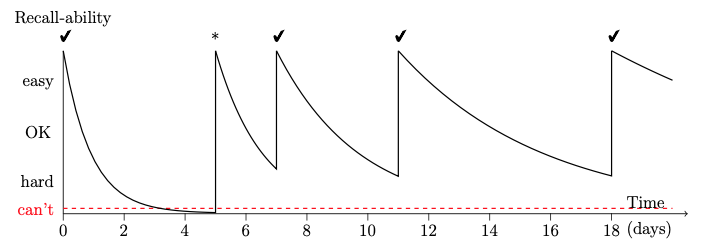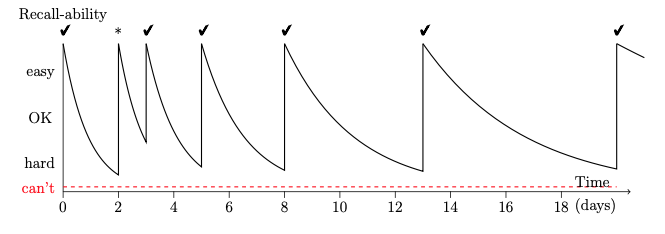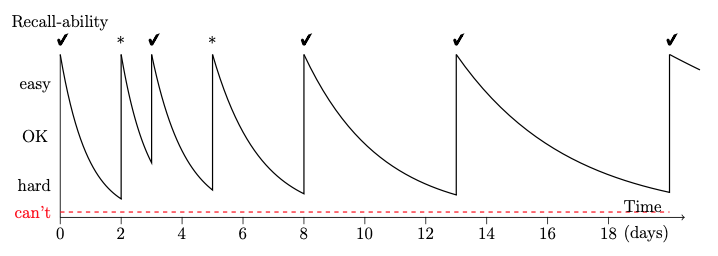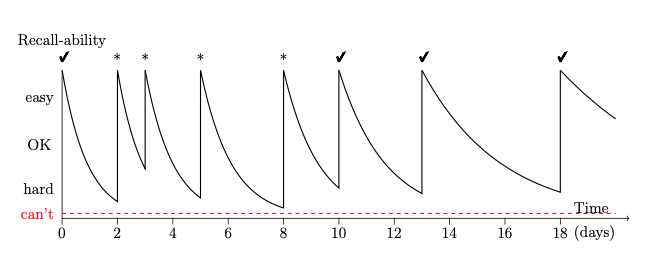...
...
...
...
...
...
...
...
...
...
...
...
...
...
...
...
...
...
...
...
...
...
...
...
...
...
...
...
...
This
...
topic
...
The teacher may read about each layer here and if desired or required can use the timely practice app to embed the course into their long-term memory.
is really a must know for everybody in education.
| Table of Contents | ||||||||
|---|---|---|---|---|---|---|---|---|
|
...
Most schools use a scheme of learning which requires teachers to teach each topic within a few days. During those few days the learners practise questions on what they have just learned, but do no more practice until they encounter the topic again in an end-of-unit or end-of-year test. This would be defined as blocked learning. Concentrating the practice at the point of teaching is called blocked learning or overlearning.
timely practice was devised to enable retrieval practice to be used by teachers. With timely practice some practice questions are done by learners directly after teaching , (blocked practice or overlearning) and some are spread out over the following lessons (the retrieval practice). The timely practice app gives each learner close to optimal spacing but typically spacing might be do another question 1 day after teaching, another question 2 days after that, then after 3 more, 5 more, 8 more etc. daysdays (i.e. approximately Fibonacci).
The spacing tries to ensure that
learners practise learning before they would otherwise forget it - to avoid the need for reminding, revising and reteaching
learners, by recall or attempted recall from long term memory, increase the duration of recall-ability
Soon what they have been taught becomes deeply embedded in their memory, yet remains readily accessible.
...
Looking at the forgetting curves in the graph above - we suggest that learners who forget:
within 2 days, within 3 days and within a week are ideal for timely practice - we call these learners “our cohort”, as they most benefit from timely practice,
between 1 and 4 weeks although these learners will benefit from timely practice, they may gain almost as much from whole class retrieval practice,
over 4 weeks - these are typically high attaining learners, who homework and end-of-unit tests etc works well for - although it has to be said that . However, most “top sets” in year 7 and 8 will contain a few learners who will benefit from timely practice and without a retrieval practice program may well be in middle or even lower middle sets by year 10 and 11.
(2) after success - increase the interval between one practice and the next
...
the app updates the depth of learning - the duration which the app knows the learner can independently recall and accurately apply the learning of the lesson for
the app calculates the earliest date the layer should be asked again - to stretch - the ready date - this is the duration of wait which will stretch the learner’s recall-ability of the learning of the layer
the app calculates the latest date the layer should be asked again - to ensure the learning is not forgotten- the overdue date - after this duration of wait we think the learner is in danger of forgetting
Each question is from the layer, and we assume that success on any question indicates some level of mastery on all similar questions within the layer.
With successful retrieval practice we are improving the recall of the faster forgetter (e.g forgets within 2 days), with a few retrieval practice questions (e.g. 5 retrieval practice questions) until they can remember as the best rememberers do (e.g. for over 4 weeks)
...
Over time, the fastest forgetter with retrieval practice can remember for longer than the best rememberer without retrieval practice. After a few more retrieval practice questions the interval (the wait between one practice and the next) will become several years. Often layers no longer need to be practised, because harder layers now cover the same learning.
(3) after failure - give feedback and decrease the interval between one practice and the next
...
correct - shown by a ✔︎ and
feedback - shown by a * assessment outcomes:
Feedback |
required |
due to poorly spaced lessons |
/learner absence | Minimal feedback requirement |
Despite well spaced lessons some feedback is needed | The teacher is very persistent with feedback - on this occasion it pays off. |
More about questions that need feedback after they are asked very late
...
giving whole class teaching on a layer, which is in all the learners assignment' assignments, and then assessing the question in the assignment as if the learner has not had help. To avoid this, get the class to complete their assignment + then collect the assignments in + then do whole class/small group revising or reteaching.
reteaching or revising before learners have had a chance to retrieve - after all some learners may be able to retrieve. If we let learners try first, we have either stretched the recall-ability of that learning if they can retrieve or we have primed the learners for learning if they can not.
Sometimes we may be able to predict that most learners won’t be able to recall learning e.g. from the last maths lesson before a half term holiday, to the first maths lesson after the holiday. The teacher may prefer to
do a cool down (retrieval practice assignment + project based learning in the last maths lesson for a number of days before the holiday (along with a retrieval practice assignment),
only add the learning (of the last maths lesson lessons before the holiday) “as taught” after revising or reteaching on the first maths lesson after the holiday.
...
Once we can see learning slipping away to forgetting - through by our assessment of retrieval practice - then we can begin to find ways to reduce this.
...



